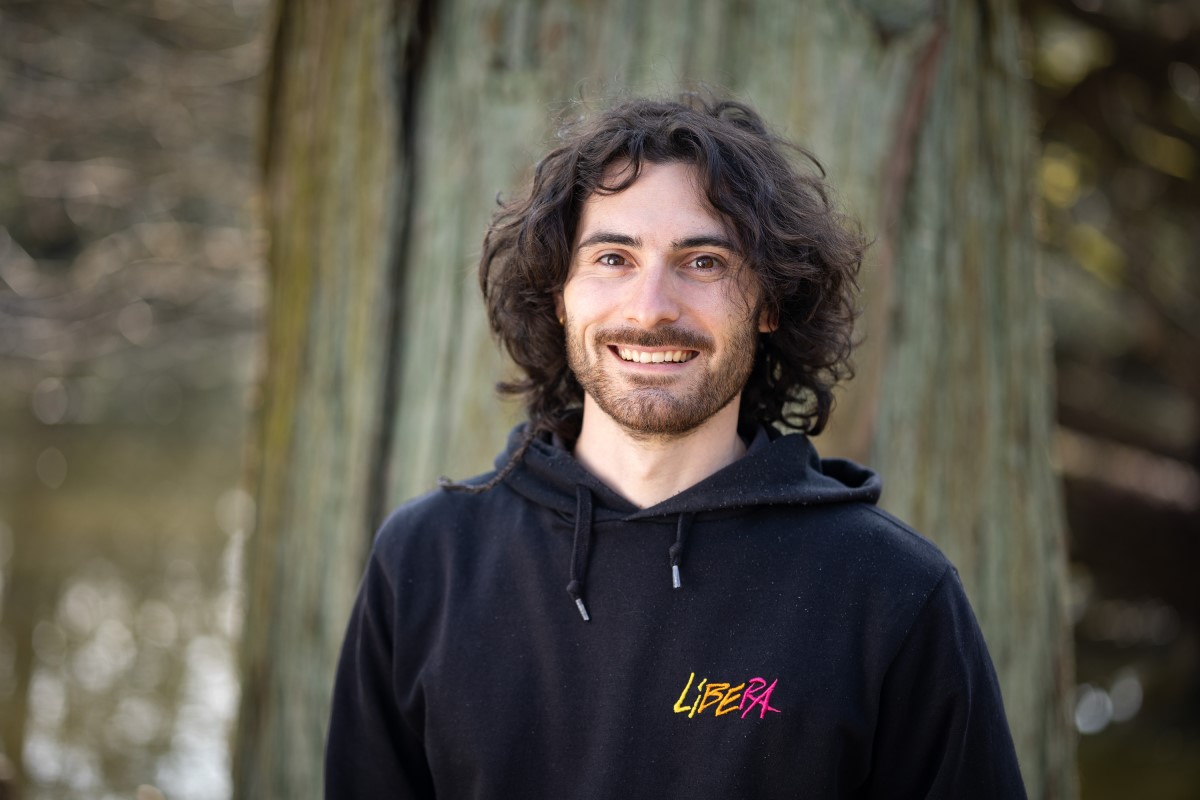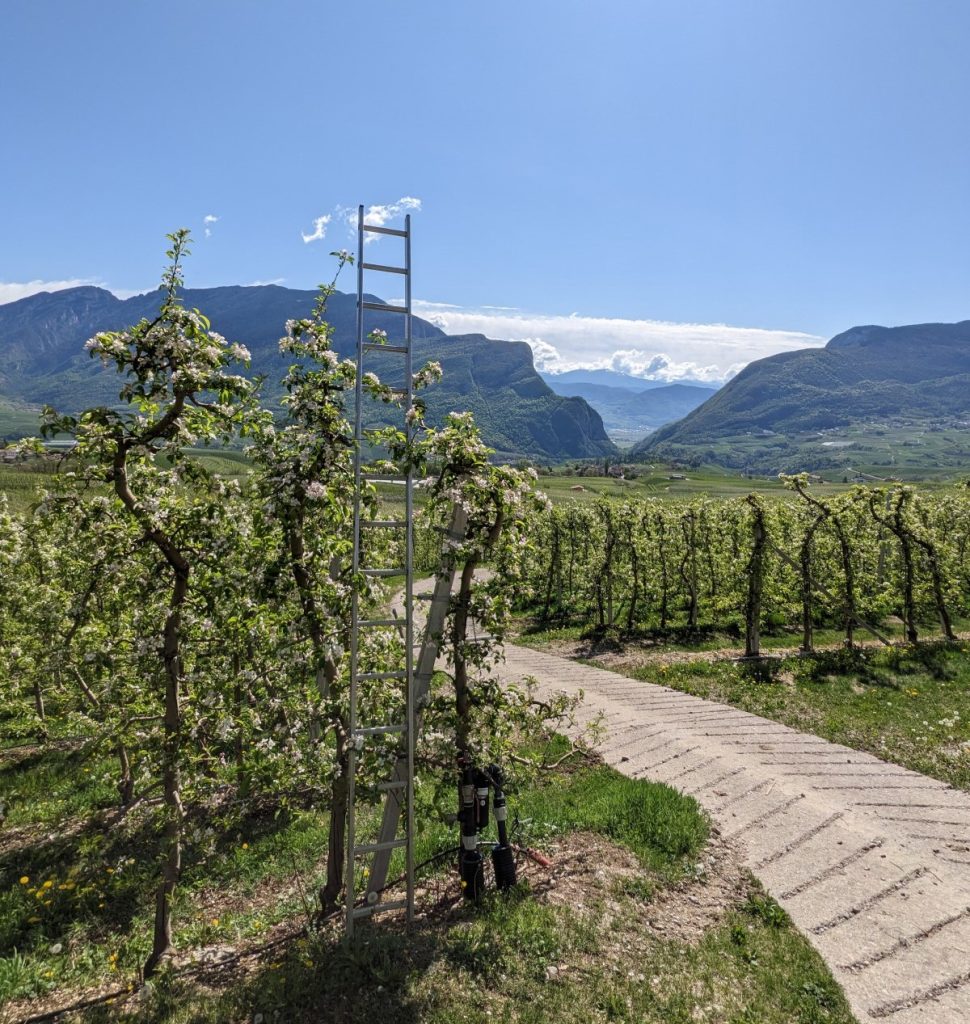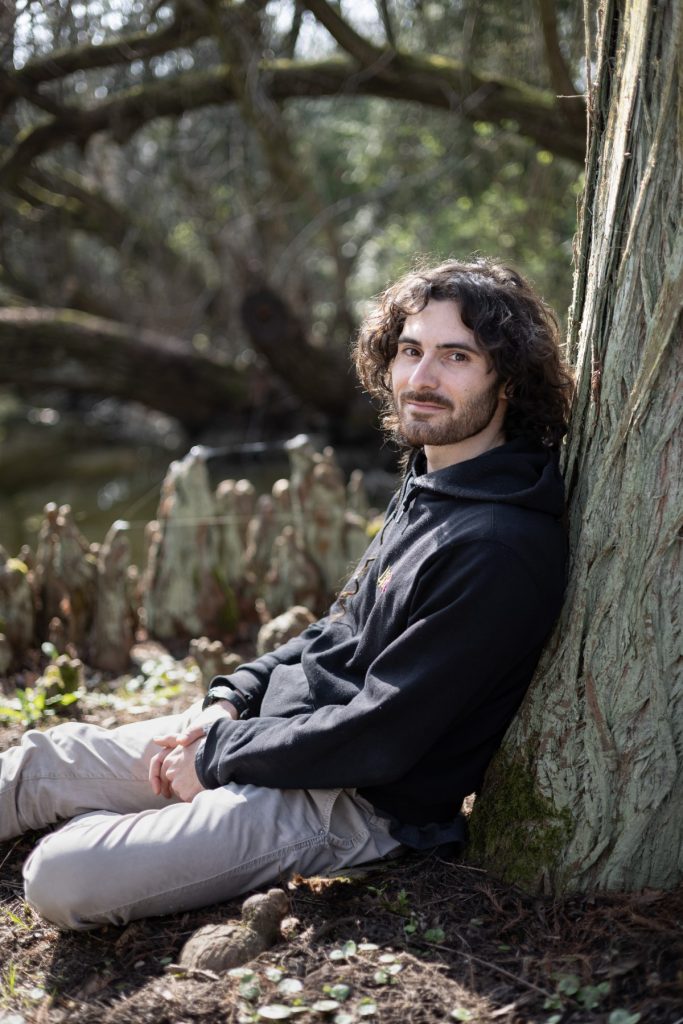
Corrado Alessandrini is an Italian PhD student visiting HUN-REN Centre for Ecological Research, and lives inside the National Botanical Garden in Vácrátót. He studies the agro-ecology of apple orchards in Trentino, and Europe’s most alpine birds, the snowfinch. He discovered that the climate change is destroying the unique microhabitats which are essential for the survival of this unique species. Corrado feels great about being connected to the nature literally every minute in the Garden, with all the trees and flowers blooming, and the birds calling, greeting the spring.
– Why are you visiting the Centre for Ecological Research?
– My Phd is upon the EU-funded National Recovery and Resilience Plan (PNRR), which requires to have a period abroad during the PhD (to make science more interconnected at the European level). I already knew Péter Batáry, head of the Lendület Landscape and Conservation Ecology research group, for his several works on agro-ecology and – since my supervisor, Mattia Brambilla, personally knew him, we thought that he could be a good teacher for my period abroad. He kindly accepted me in Vácrátót for a 6-months stay. I have been now here for five months, sadly time is running out! During my stay here, I have been basically studying my own data, but by applying and learning the techniques that the research group uses here, basically within the fields of Landscape and Community Ecology.
– Please tell me about yourself and your studies first. What’s your background and what are you studying?
– I’m a naturalist from Rome, Italy. I started a bachelor in natural science, so I integrate animals, plants, rocks, and ecosystems in my studies. This gave me an holistic view that I really enjoy having in my background. After the BSc, I kept studying in Rome for a master’s degree in Ecology and Conservation. As a master thesis I contacted Mattia Brambilla from University of Milan and together we studied the foraging ecology of the white-winged snowfinch (Montifrigilla nivalis), an alpine bird species endangered by climate change, by using innovative methodes of remote sensing. Thanks to this, we’ve disclosed new aspects of the species’ ecology and reaffirmed its dependence on climate-sensitive habitats, which poses a threat on the species. After that, I went to Oviedo (Spain), to keep studying this bird with Maria del Mar Delgado, again integrating field studies with remote sensing, which is very helpful in such harsh environments like mountains.
– Your PhD topic is about the connections between agriculture and wildlife communities. Why is this topic interesting to you?
– Yes, I’m currently a PhD student at University of Milan, with a field project in the Non Valley (Trentino, north of Italy), one of the most productive areas for apples in all Europe. There, farmers are trying to make the production more sustainable, so they wanted us to study the biological communities that live inside the apple orchards to try to understand whether their activities are impacting these communities and how such communities can provide valuable ecosystem services for the apple production. So, last year we started this project by firstly focussing on three taxa: birds, pollinators (especially insect pollinators), and rodents. These taxa are involved in the supply of important ecosystem services, basically insect-pest control (insectivorous birds feeding on apple pests), pollination (by bees and other wild pollinators), and weed control (whose spread is controlled by granivorous birds and rodents). Richer biological communities (and especially the occurrence of rare bird or butterfly species) can also be very attractive for nature-based tourism, which is an important asset for the whole Trentino province.
– You are accommodated inside the National Botanical Garden in Vácrátót. How does it feel?
– Definitely great! I lived in Milan this past year. And Milan is a very crowded, “hyper-urban” city, I would say, with very few green areas. While here I’m all the time connected with nature. Literally every single minute I can hear some bird calling. For instance, now birds are “warming up” for the breeding season, and many have already started singing. Trees are sprouting after the winter, and the first flowers are shyly colouring the Garden. Few weeks ago, squirrels came out of dormancy, they really looked sleepy! Well, every day you can find something going on when you have so much life around. And for me, as a naturalist, this is precious.
– In Italy, you cooperate with the apple farmers. Is there any conflict between the ecologists and farmers because of their different interests?
– We work with a farmer’s association that started to push towards a more sustainable agriculture 20 years ago by adopting integrated management. Their practices are not pure conventional, indeed, and they do intend to be more sustainable in their production. This makes our cooperation much easier. Of course, we come from very different perspectives, but we need one another, because we do love apples, and they do want to hear blackbirds singing in their orchards. The main goal of agriculture is to produce food, not to save birds, and we do acknowledge that we all need this food. On the same time, we all know that conventional intensive agriculture is driving farmland birds to extinction and that it severely impacts wildlife (and human) health. Here we are trying a new way. Sometimes (and my supervisor Mattia Brambilla proved this in previous works in vinyards), very little things can make a huge difference for biodiversity. For example, by slightly shifting the timing of mowing the grasses inside the orchards we could sustain much richer pollinator communities (that forage on those herbs and flowers). You see, this alternative management doesn’t really affect farmer’s production, but it does help biodiversity. Solutions like this is what we are all looking for.

– You conducted a lot of studies on the snowfinch. Why is this bird so important to you?
– The white-winged snowfinch has quite a large distribution area. It is found originally in the highest mountains of the Himalaya, but, as the only species from its genus (Montifringilla), came to Europe as well, following all the mountains: Caucasus, Balkans, Alps, and Pyrenees. Nowadays it’s the most cold-adapted species in Europe. This is the most alpine bird we have: in fact, it’s the only one that can survive above the tree line (which means roughly above 2000 m), even during winter. They can live with all snow around in very harsh conditions. Because they are adapted to cold, they are one of the most endangered species in the age of climate change, and note that mountains are warming up twice faster than lowlands. This is why we are so concerned about studying its European population. We have already found evidence of population declines (e.g. in Switzerland), and we found that they depend on climate-sensitive habitats. We focussed on their breeding ecology: this is a critical period, when the adults forage for the newborn chicks. We saw that they forage in specific microhabitats (namely snow patches, snow margins, and low-sward grasslands) which are all predicted to disappear in a very near (warmer) future. We expect that, as in a few years they would have more problems in finding suitable microhabitats for feeding their chicks, this would hamper their survival and therefore the fitness of the whole population.
– How do you study the snowfinches and their habitat?
– I wanted to assist the current research with the potential of remote sensing, which is nowadays able to capture at high resolution what’s going on Earth’s surface. We use satellites to describe the environment where the birds live, so we don’t need to go up there to see whether vegetation is blooming or to estimate snow cover during the breeding season. By using satellites, we can record such changes remotely, every 3 to 5 days, in a very uniform way, and simultaneously over very large extents. We found that remote sensing can be a useful conservation tool. Once you know the area where they live, for instance, a national park, you can keep tracking the evolution of those critical habitats (snow patches and short grasslands) across the breeding season, and eventually act if conditions become critical.
– Is the climate change affecting the whole bird community or there are some species which are affected most?
– In general, it starts by affecting specialist species (which are less capable to face environmental changes due to their high degree of ecological specialization), but later its effects propagate to the whole community. Communities are constantly adapting to changes in the environment (this mechanism is called “homeostasis”). But climate change is now stressing them at an unprecedented level, by disrupting many ecological dynamics at the same time. This results in a general loss of the resilience of bird (or any other animal) populations, and their ability to cope with other environmental changes also declines. In high mountains, for instance, we now know that climate and ski tourism (another important – anthropogenic – source of environmental change), are synergically impacting on our bird communities.
– What are your plans after you go back to Italy?
– We will continue investigating the birds in the Non Valley. From the data we collected last year, we noted very low densities of great tits, an insectivore species that is very important for controlling the outbreaks of pest insects in orchards. Hence, we now want to test whether providing them with nest boxes (where they can breed) can help increasing their population inside the apple orchards, therefore maximising the supply of the pest-control ecosystem service. Besides this, on a longer term, I think I will keep doing the same: studying nature to provide solutions for better policies, which is what conservation biology does. No matter where, in the agro-ecosystems or up on the mountain tops, always trying to push us all to be a little bit “softer” with our Earth.



